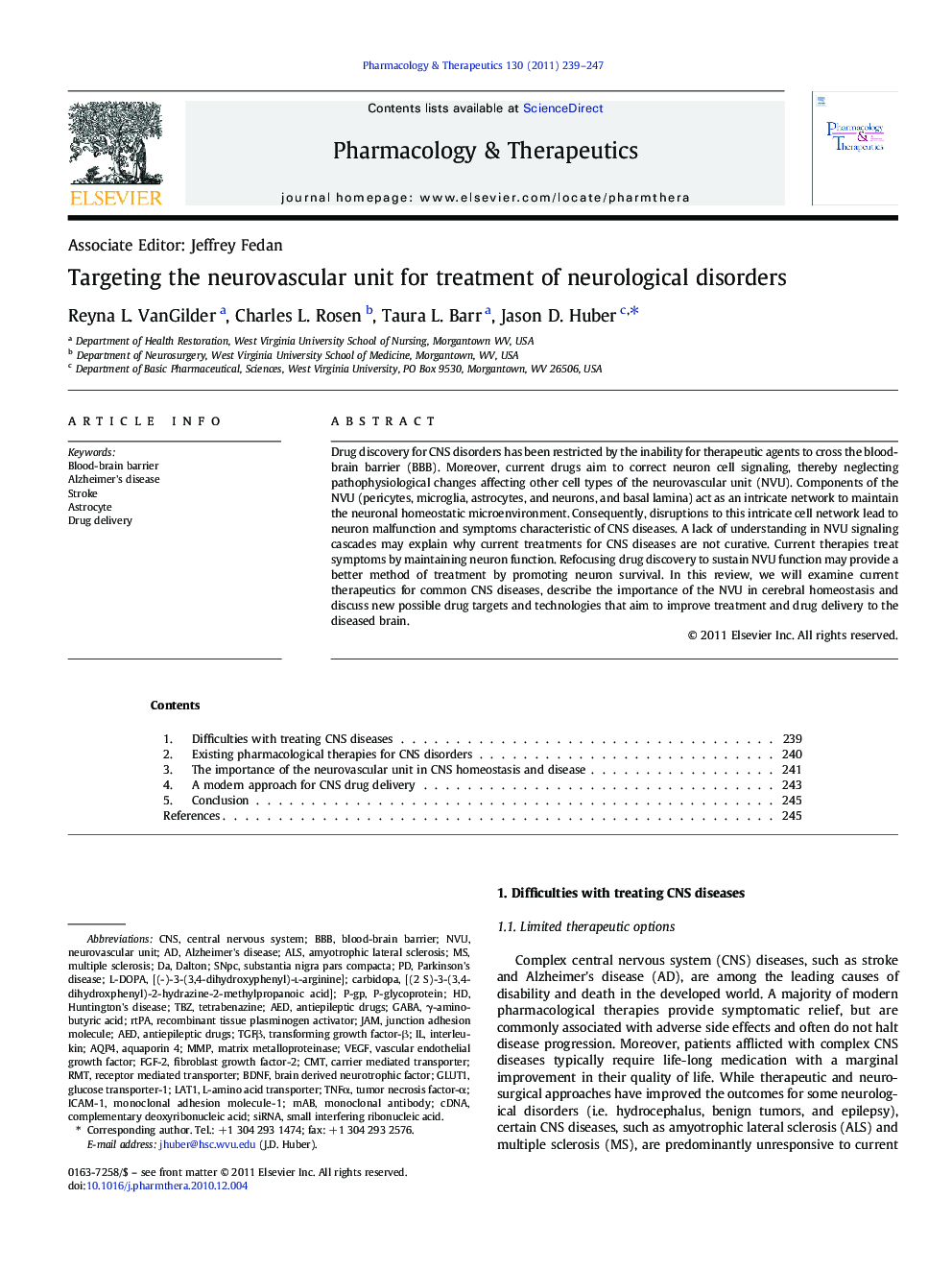| Article ID | Journal | Published Year | Pages | File Type |
|---|---|---|---|---|
| 2563412 | Pharmacology & Therapeutics | 2011 | 9 Pages |
Drug discovery for CNS disorders has been restricted by the inability for therapeutic agents to cross the blood-brain barrier (BBB). Moreover, current drugs aim to correct neuron cell signaling, thereby neglecting pathophysiological changes affecting other cell types of the neurovascular unit (NVU). Components of the NVU (pericytes, microglia, astrocytes, and neurons, and basal lamina) act as an intricate network to maintain the neuronal homeostatic microenvironment. Consequently, disruptions to this intricate cell network lead to neuron malfunction and symptoms characteristic of CNS diseases. A lack of understanding in NVU signaling cascades may explain why current treatments for CNS diseases are not curative. Current therapies treat symptoms by maintaining neuron function. Refocusing drug discovery to sustain NVU function may provide a better method of treatment by promoting neuron survival. In this review, we will examine current therapeutics for common CNS diseases, describe the importance of the NVU in cerebral homeostasis and discuss new possible drug targets and technologies that aim to improve treatment and drug delivery to the diseased brain.
